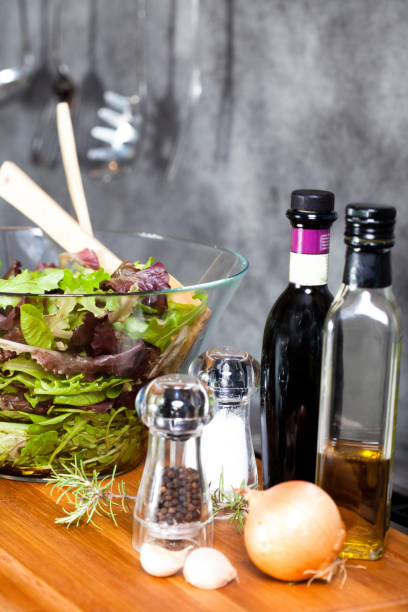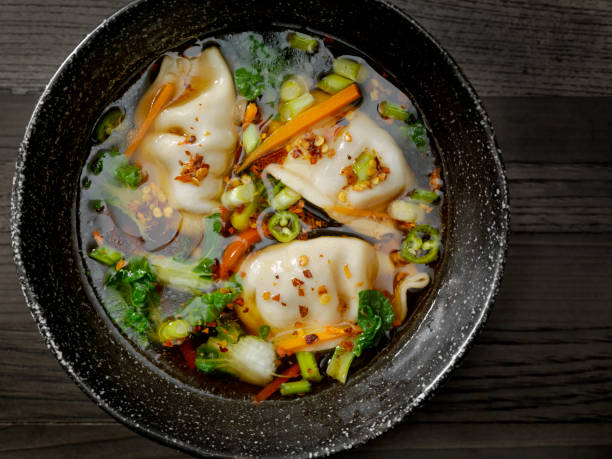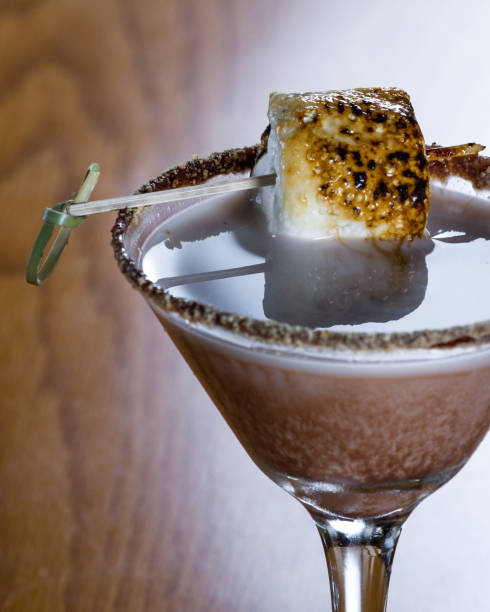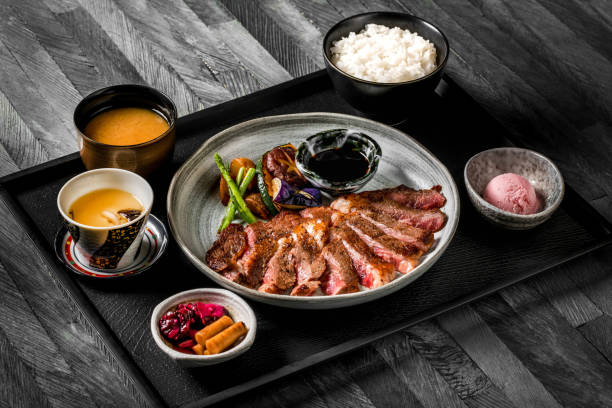Composed salads, which are simple and versatile, make great bistro meals from leftovers.
During these cold winter-into-spring days, eating only hearty, warming soups and stews can be tempting. Even the best of these dishes can become repetitive at this time of the year. Then, the desire for something new and different takes over. A glance in the fridge may reveal a strange assortment of vegetables, while the pantry might contain a handful of tiny potatoes. The French call this a salade composition.
Composed salads first appeared in French texts in the 19th century. They were traditionally served at formal dinners. However, placing fresh ingredients on a platter goes back to the summers of Ancient Rome. Composed salads are a standard feature on French bistro menus today. They are usually served as a main course at lunch and are often accompanied by a baguette or a bottle of wine.
This salad has a similar amount of raw vegetables to lettuce, giving it a sense of substance and delicacy.
The salade Nicoise is the most well-known. It combines lettuce with tuna, olives, and tomatoes. The salade Lyonnaise is a less prominent French version. It marries textures beautifully: crisp frisee leaves meet crispy lardons bacon and tops it with a hot poached egg. Once you pierce the yolk, the warm, silken goodness envelopes the salad.
Another bistro favorite, often referred to as “salade composer” on menus, is its Gruyere and jambon du Paris strips. These are unsmoked, mildly spiced types served on a bed with dressed lettuce. To keep it lively, the French add tomatoes if they are available. They also add chives to the dish. As with many French salads, these classic French salads are dressed with a mustard vinaigrette. They’re best served at room temperature.
A salade component is an excellent choice for home because of its versatility, healthiness, and ease of use. This list also includes the economy. This salad is a great way to use up leftovers. This could include grilled chicken, salmon, baked butternut squash, or other grains like farro and quinoa. There are many easy ways to incorporate yesterday’s ingredients. For example, you can make croutons from stale bread, crumbled feta, and blue cheese or shred celeriac or carrots.
Serve a salade compossée on a platter if you feed more than two people. The heavier ingredients, like potatoes, hard-boiled eggs, and grains, will make it difficult to eat the delicate greens. Make sure to mix some of the dressing into the lettuce before you start to assemble your platter. The rest of the sauce can be used to drizzle over the ingredients. A generous sprinkle of chopped fresh herbs like chives and basil will bring spring to life. Sunny shades of yellow and orange will scream summer with edible flowers. Peppery nasturtiums are delicious and beautiful, so they’re a great choice.
Making a salade composée at home requires improvisation. You can play with the salad dressings to make them look different. It’s like painting a room pink or softening the green of a tree. Furniture can suddenly appear new and surprising. For heat and brightness, I add harissa to my salad dressing during the cold days of spring. These flavors perfectly offset the sweetness of the roasted squash and golden raisins and the saltiness of fresh feta.
I recently had a wonderful salad at Green O in Greenough, Mont. Brandon Cunningham, the Green O’s chef, prepares an oil from herbs that he mixes with a tahini sauce. Cunningham also organizes “bird seeds” made of sunflower and poppy seeds. He also prepares a tahini dressing with sunflower seeds and coriander seeds. The layering of textures gives Mr. Cunningham’s salad its addictive appeal. The creamy tahini green goddess sauce blends with the thinly sliced raw vegetables. The irresistible toppings add crunch.
Green O salad’s ratio, roughly the same volume of raw vegetables as lettuce, surprised me. This gives the salad both substance and delicacy—the choice of vegetable changes with the seasons. The bird-seed topping keeps it all together year-round. To make large batches, you’ll need to keep them all on hand.
Another trick of a chef: Use a little puree to cover the bottom of the serving dish. Markus Glocker, a New York City chef, often makes lemon curd or herb coulis and spreads it on the plate. Then, he will arrange the salad on top. After guests drag the greens across their leaves, they are treated to an unexpected burst of flavor. Make a simple version by blending a preserved lemon and one tablespoon of olive oils until it becomes mousse-like. This simple step can make your salad dinner party worthy.
These recipes are just starting points and can be reinterpreted endlessly. You can add nuts, protein, scallions, and seeds. Look at all odds and ends in your refrigerator and make a meal out of them.
The Bistro Salsa
TOTAL TIME25 minutes
Ingredients
The vinaigrette is
One teaspoon of sharp Dijon mustard
Granulated sugar
1/4 teaspoon sea salt
Two tablespoons red-or-white-wine vinegar
Freshly ground black pepper
Six tablespoons Extra-Virgin Olive Oil
To make the salad:
4 cups small red potatoes
Four eggs
12 ounces lettuce, or preferably a mixture
One tablespoon of minced chives
Two tablespoons fresh dill leaves
1-pint cherry tomatoes
French ham sliced into batons, 1/4 pound.
14-pound Gruyere cut into batons
Directions
Make the vinaigrette by whisking mustard, sugar, salt, and vinegar in a small bowl. Mix in the olive oil until it becomes emulsified.
Boil potatoes in a large pot of salted boiling water on high heat for 20 minutes.
Boil eggs in a small saucepan of water on high heat until they are just hard-boiled. Cover the pot and let them boil for 7 minutes. Then drain the water and rinse under cold water. Cut in half lengthwise.
Toss the lettuce, tomatoes, chives, and dill in a bowl with enough vinaigrette to coat. Arrange the tomatoes, greens, eggs, Gruyere, ham, and potatoes on a platter. Add more vinaigrette to taste and season the dish with salt and pepper.




